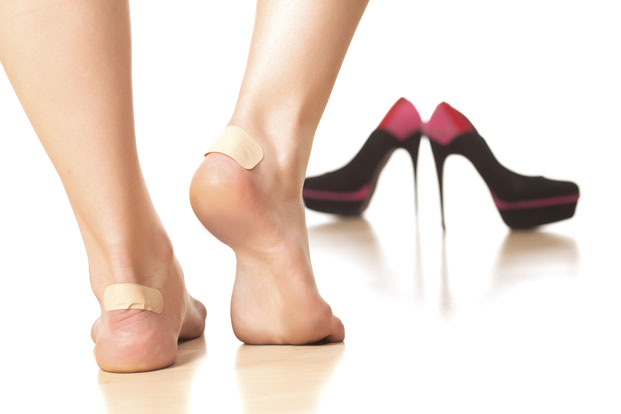The human foot is an evolutionary marvel, comprised of 42 muscles, 26 bones, 33 joints, and more than 50 ligaments and tendons. Every day, the human foot handles hundreds of tons of force, with all of its parts working in harmony to get it from Point A to Point B. But the stress of this work, combined with our choices in footwear, exercise (or lack thereof) and countless other factors put our feet at a high risk of injury.
These eight common foot injuries can spell trouble for your feet:
Bunions
A bunion is a bony bump that forms on the base of the joint at the bottom of your big toe. Bunions form when your big toe pushes against your second toe, forcing the joint of the big toe to get bigger and stick out. Often, the skin covering the bunion might be red and sore.
Wearing shoes that are too tight or too narrow may cause bunions or exacerbate them. This deformity may develop as a result of an inherited structural defect, repeated stress on the foot or a medical condition, such as arthritis.
Hammertoe
A hammer toe is a contracture, or bending, deformity in one or both joints of the second, third, fourth or little toes. This abnormal bending can put pressure on the toe when wearing shoes. Hammertoes typically start out as mild problems and become progressively worse over time. When diagnosed early, they can often be managed with noninvasive measures but if left untreated can require surgical treatment to correct.
Hammertoes can be caused by ill-fitting or high heeled shoes, trauma or heredity. To prevent or manage these deformities, wear shoes with lower heels, supportive shoes or shoes with a roomy toe box. You also can soak and ice your toes to ease pain.
Corns
Corns are buildups of skin that form at points of pressure or over bony prominences. Where calluses form on the bottom or side of the foot, corns form on the top of the foot or between toes.
These buildups form from repeated friction and pressure from skin rubbing against the bony areas of the foot or an irregularity in a shoe. They also can result from heredity disorders.
Neuroma
A neuroma is a painful foot condition, often called a “pinched nerve” or a nerve tumor. This benign growth of nerve tissue occurs more often between the third and fourth toes and brings pain, burning, tingling or numbness between the toes and the ball of the foot. Neuromas most often present with pain while walking, which can be eased by stopping, removing footwear and rubbing the affected area.
Neuromas are brought on by tight or ill-fitting shoes, trauma, high-heeled shoes or heredity.
Plantar Fasciitis
Plantar fasciitis is inflammation of the long band of connective tissue that runs from the heel to the ball of the foot.
This disease affects women more than men and is caused by stretching of the long band of tissue that connects the heel to the ball of the foot.
Flat Foot/Fallen Arches
A flat foot is a common condition that occurs when the tissues or tendons holding the joints in the foot together are loose. This condition is normal in infants and toddlers, and in most cases, the tissue will tighten and form by the time a child is approximately three years old, but in some people, the arch never forms. While most flat feet do not cause pain or problems, in some cases, people with flat feet may have other foot-related problems, or develop ankle, knee, hip or lower back pain.
While flat feet may be genetic, injuries and illness may harm the tendons and cause flat feet to develop, called fallen arches. This type of flat foot may occur on one or both sides. In rare cases, this condition may develop as a result of two or more of the bones in the foot growing or fusing together — a condition known as tarsal coalition.
Plantar Warts
Warts are one of several painful soft-tissue conditions that can develop on the feet. Plantar warts are caused by a virus, which typically invades the skin through small cuts or abrasions. While they can appear anywhere on the skin of the foot, those that form on the sole are called plantar warts. Most warts are harmless, although they may be painful. Although rare, sometimes serious lesions may appear on the foot, including melanomas. Because warts can be misidentified, it’s important to see a podiatrist about any suspicious growth that develops on your foot.
The plantar wart is often contracted by walking barefoot on dirty surfaces where the virus lurks. The virus that causes these warts thrives in warm, moist environments, making infection common in the same places one might contract athlete’s foot, namely in communal bathing facilities. If left untreated, these warts can grow to an inch or more in circumference and can develop into clusters of several warts. When these warts develop on the weight-bearing parts of the foot, such as the heel, they can cause sharp, burning pain.
Gout
Gout is a complicated type of arthritis caused by a buildup of uric acid in joint tissues and joint fluid, which happens when the body is, for one reason or another, unable to keep uric acid levels in check. One of the first places where this buildup is likely to occur is in the joint at the base of the big toe. Because toes are, temperature-wise, one of the body’s coolest parts, the uric acid crystallizes in these areas.
Gout attacks are characterized by warm, swollen and red toe joints that develop excruciating pain at the slightest touch. Gout attacks can be prevented by avoiding triggers that include high-purine foods, red meat, many fruits and alcohol. To ease pain, one can apply ice, stay hydrated and keep the foot elevated by staying in bed.

Leave a Reply